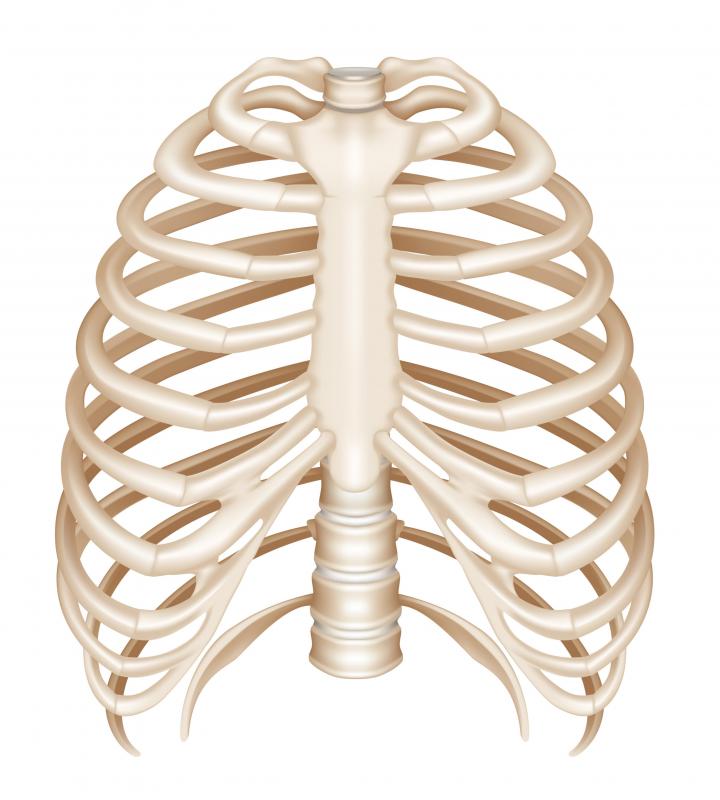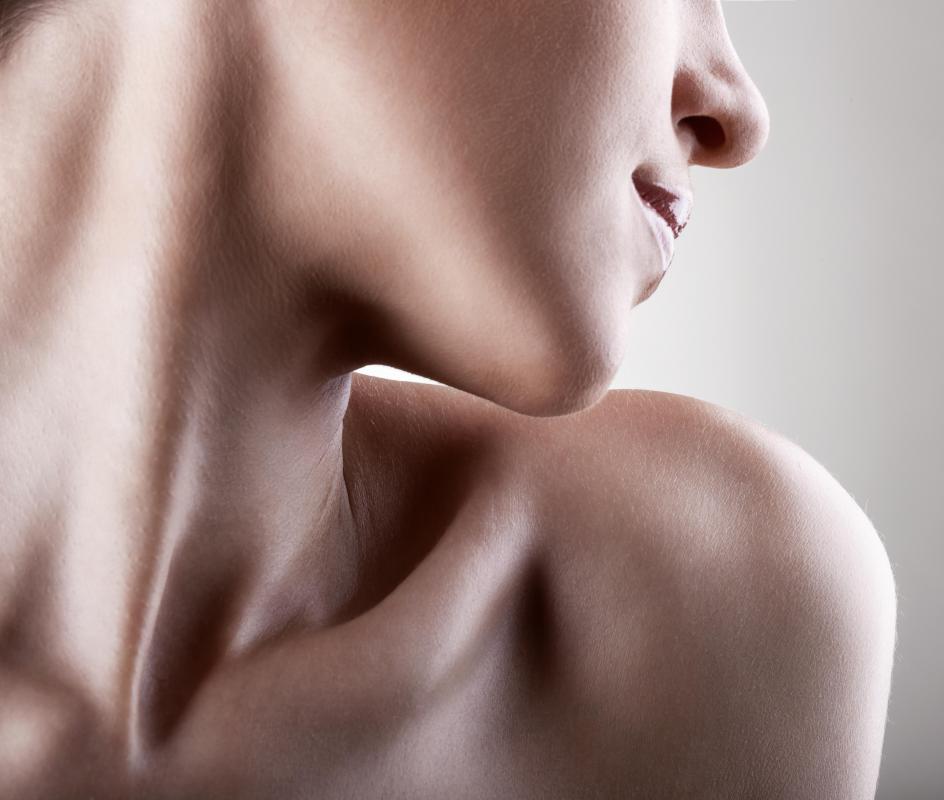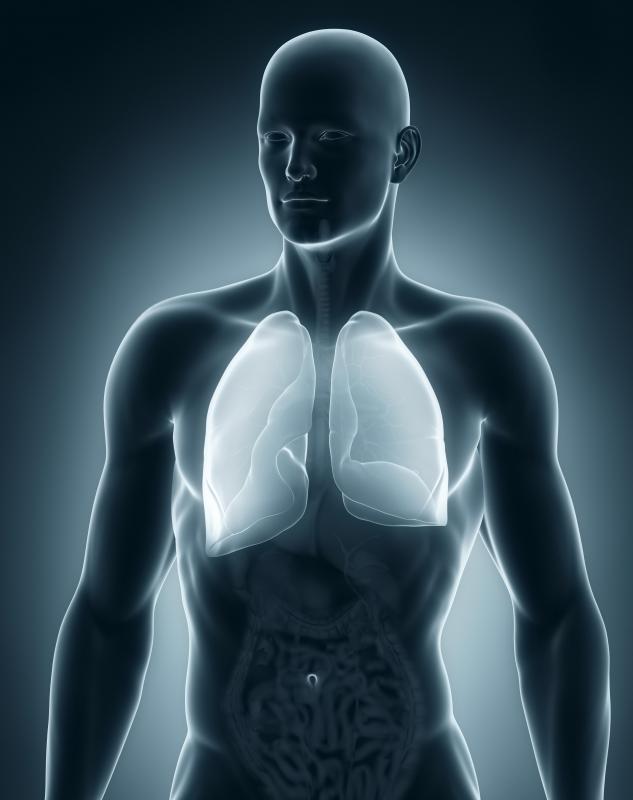At WiseGEEK, we're committed to delivering accurate, trustworthy information. Our expert-authored content is rigorously fact-checked and sourced from credible authorities. Discover how we uphold the highest standards in providing you with reliable knowledge.
What are the Costal Cartilages?
The costal cartilages are strips of cartilage associated with the rib bones. They attach some of the ribs to the sternum. These cartilages are made from hyaline cartilage and provide flexibility to the chest cavity, as well as protection to the organs in the upper torso.
Ribs one through seven are connected in the front to the sternum via costal cartilage; the rib bones themselves do not articulate directly with the sternum. The costal cartilage bridges the first rib with the manubrium of the sternum, while the second through seventh attach their respective ribs to the body of the sternum. Each of the remaining five ribs are known as false ribs, since they either do not attach to the sternum or attach indirectly by forming branches of other costal cartilage.

Presence of costal cartilages in the ribcage plays an important role in the body’s skeletal system. The ribcage protects the organs of the upper torso from damage — especially the heart and lungs — but without flexibility, it would break easily. Costal cartilage gives away slightly under pressure, thereby making it less likely for the ribs or sternum to fracture. Fractured ribs can puncture organs in the upper torso, so this flexibility can be vital to reduce internal damage.
The costal cartilages also serve as a site for ligament attachment. A costoclavicular ligament attaches the first costal cartilage to a section of the clavicle. This helps to stabilize the clavicle and limit its movement.

Several muscles attach to the costal cartilages. The subclavius muscle attaches to the first one and to the clavicle; it serves to depress and move the clavicle forward. A pectoralis major muscle originates in part at the second through sixth sternal cartilages and is involved in movement of the arm at the shoulder joint. The transverse abdominis muscle, which is involved in abdominal compression, originates in part from the fifth through tenth costal cartilages. A transversus thoracis muscle arises from the fourth through seventh costal cartilages, near the sternal margin, and plays a small role in forced exhalation.

During injury, it is possible for the costal cartilages to become dislocated from the sternum. This can cause considerable pain, particularly during inhalation. Rib bones sometimes separate from their cartilage, a condition that is sometimes called a costochondral separation. This can cause the rib to point upward into the tissue or rib directly above it and result in severe pain.

Inflammation of the costal cartilages is called costochondritis. Symptoms of costrochondritis may include tenderness and pain in the ribcage, which may be confused with pain caused by a heart attack. Pain when coughing and trouble breathing may also be involved. Most instances of costochondritis have unknown causes, but the inflammation may be caused by injury, infection, fibromyalgia, or referred pain, which is pain that is redirected from another part of the body.
AS FEATURED ON:
AS FEATURED ON:

















Discussion Comments
The construction of the sternum and rib cage is very advanced. It has the ability to give just enough to bend not break. It is also made of bone, a very strong material.
The beautiful part of the human body is it's ability to regenerate and heal. Not only do you have this shield in your chest, it can repair itself.
The thousands of years it took the human body to evolve this miraculous system proves that it is a proven keeper.
Post your comments